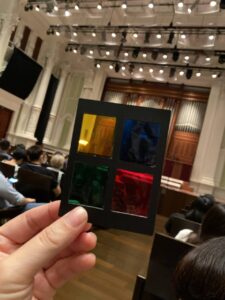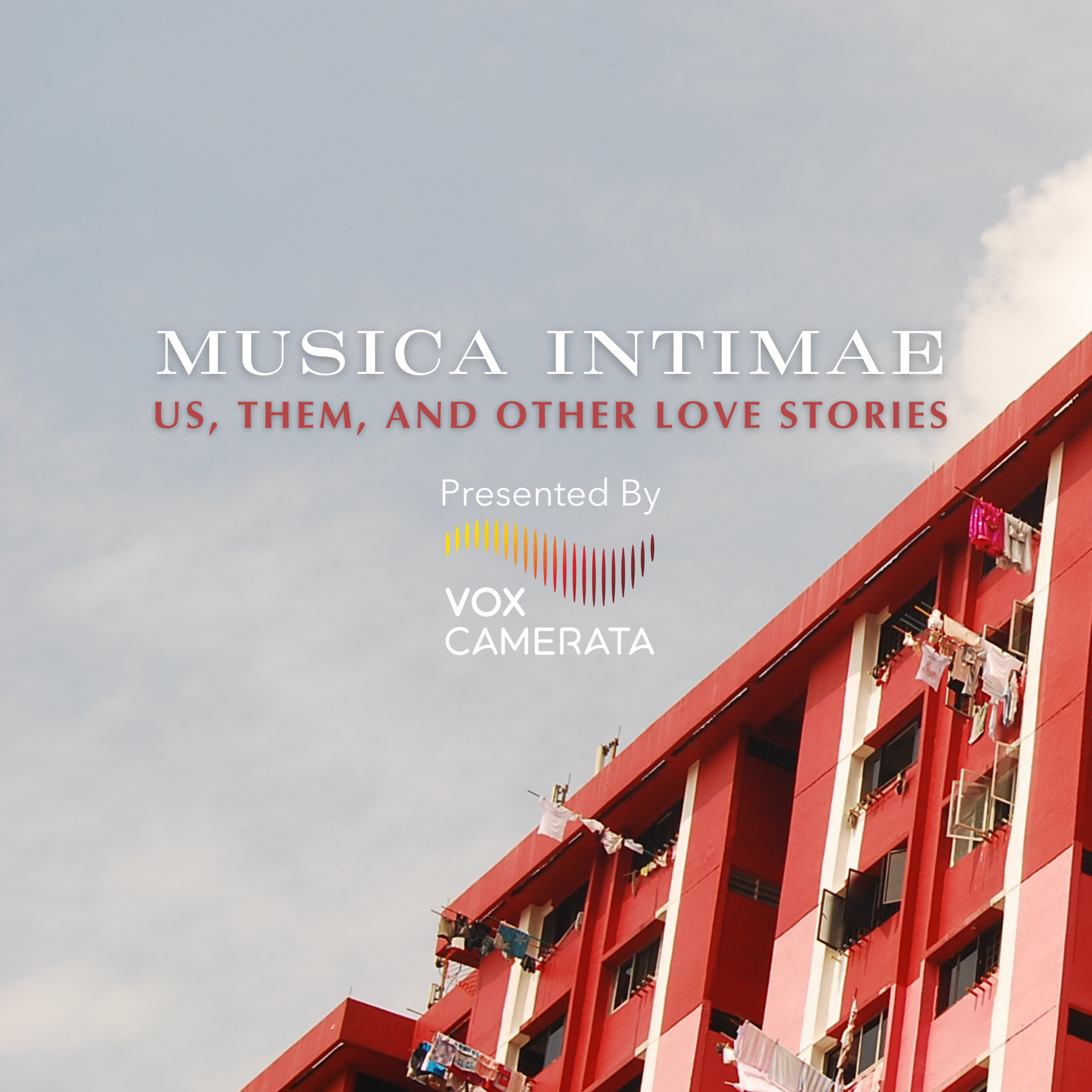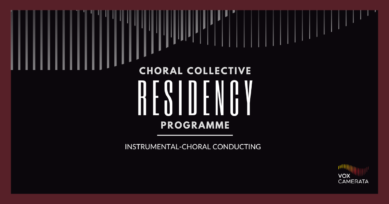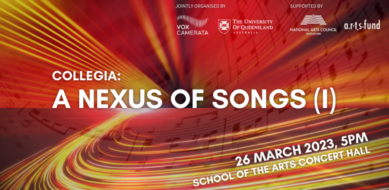In a pandemic fuelled by airborne infection, communal singing is frequently cited as a high-risk activity rife for transmission. Even Singapore’s own Ministry of Education put choral singing as one of the last co-curricular activities to resume in-person after two years of mainly on-line singing. So what is the chance of a choral concert being derailed from COVID-19 when we have both highly-transmissible Omicron variant and intense rehearsals before a concert? Pretty high, if we choral enthusiasts want to be honest about it. The question mostly becomes how bad the impact is, and how to get around the resulting logistical nightmare.
In the case of ONE Chamber Choir’s latest concert, it caused them a two-month delay. Fans, friends, and families were notified of the delay one day before the original 17 July concert date due to a rise of infection within the choir. This was unfortunate, and one can only imagine the resultant logistical somersault the choir had to do to manage the rescheduling. It was a relief when finally the date of the reschedule was announced to be 18 September.
The concert was highly anticipated, no less because it marked the return of the choir to their regular programming pre-pandemic. ONE Chamber Choir had been a mainstay in the circle of choral enthusiasts for being a highly decorated competitive choir, having won their Gold Medal and Category Champion in Chamber Choir category in World Choir Game 2018 in South Africa, and tied for 2nd prize in the 15th International Chamber Choir 2017 in Marktoberdorf, Germany. Aside from their overseas accolades, they frequently hold concerts within Singapore. I have attended many of their past concerts and found them very engaging with interesting artistic directions and high standards of choral singing.
When the audience stepped into Victoria Concert Hall, they were presented with an interesting-looking contraption of four-coloured semi-transparent foil. One would wonder what this device had to do with the concert, as it would be revealed later.

Half the choir entered the stage and opened the concert with Come in and Stay Awhile by Rhonda Play, a light-hearted welcoming song. Several verses into the song, the other half of the choir joined and revealed the full size of the choir and its tonal color for the first time. The signature ONE sound is very much present, with light agile tone on the soprano, warm alto, strident tenor, and rounded bass. This made for a tuning that was very easy on the ear and highly compatible with their repertoire. The choir looked and sounded a little smaller compared to past concerts pre-pandemic, which served as a reminder to how much disruption the pandemic has done to the continuity of community choirs in general in Singapore.
It was followed by an arrangement of Latvian pop song Mazā bilžu rāmītī which was originally sung by Renārs Kaupers, arranged by Ēriks Ešenvalds. ONE Chamber Choir is still one of the few choirs in Singapore that has ever competed in Pop and Jazz category, and this was quite a successful rendition that showcased their versatility well.
The opening segment concluded with To See a World, a recent composition by local composer Kenneth Tay, serving as a nod to the choir’s roots for championing contemporary works. The song was a lush soundscape that frequently used Japanese in scale (also known as Sakura scale) to paint the scenery. The choir successfully navigated the cluster chords and tricky tuning to give the piece justice. As the composer was present in the audience, a well-deserved congratulation was in order.
At the end of the opening segment, the solid voice of the emcee Teng Xiang Ting, who is probably more well-known as a sought-after operatic soprano, narrated the poem that finally tied together the theme and title of the concert. 线 (xiàn), literally meaning “thread”, was conceptualized as the many paths one might take in their life, in a similar vein to the famous poem The Road Not Taken by Robert Frost. During the concert, local poet Benzie Dio wrote a contrapuntal poem in response. The poem was composed around four themes: passion, spirituality, nostalgia, and freedom. There was a twist: the poem was meant to make sense in any order we read the stanzas. Each theme represented a pair of songs in the repertoire and the audience in turn was meant to have a choice in what order the theme will be presented.
The purpose of the previously distributed contraption was then revealed. The four colors of the transparent films represented the four themes: red passion, blue spirituality, green freedom, and yellow nostalgia. The emcee called upon the audience to be fellow travelers in the junction leading to each theme. At the end of each thematic segment, the audience would vote by flashing their smartphone’s flashlight into the colored transparency, which was quite clever. There was also an option of voting using a web application specially designed for the concert.
The segment for red passion won the audience’s first vote. It opened with a world premiere of La Patasola by Ily Matthew Maniano. Patasola is South American folklore about female monsters from the jungle, appearing to male hunters or loggers in the middle of the wilderness when they think about women. The composition was highly virtuosic with rhythmic tenor and bass section, and seductive soprano and alto lines. This was a very convincing rendition.
What followed was a personal favorite: Somewhere Out There, from the animated movie An American Tail (1986), arranged by Audrey Sneider. A cameo of five little kids who were the children of the choir members sung some of the lines with the choir accompanying, which was reminiscent of the settings of the movie where it was sung by mouse siblings Fievel and Tanya Mousekewitz. Judging from the audience reaction at the end of the song, it was safe to say that the five kids had successfully stolen the audience’s hearts. I found the connection between the settings of the movie and the choral arrangement very apt and relatable. The choir delivered a passionate rendition that transported me back to the 90’s, and before I knew it, I shed a tear.
The green freedom segment was voted next. It opened with Asa Yueni by Ko Matsushita, a setting of text by Shuntarō Tanikawa. The soaring soprano solo gave a nice touch of color to contrast the backdrop of the parallel chords that is frequently employed by the composer.
Psallite by Kyle Pederson was the only repertoire that exclusively employed treble chorus. Both the soprano and alto used a fuller tone to make up for the absence of tenor and bass section with wonderful effect. The highly rhythmic movement and the contrasting calmer moments were navigated successfully.
Next in the vote was the blue spirituality. Ubi Caritas by Ola Gjeilo is a very popular sacred composition both in concerts and recordings, albeit most people would be more familiar with its SATB setting. The TTBB configuration was an interesting change in color to the familiar piece and showcased the soothing gentle tenor section and warm bass of the choir.
This was followed by Prayer by René Clausen, a setting of a prayer by Mother Teresa of Calcutta. The deeply contemplative text and lush harmony shone through in the acoustics of Victoria Concert Hall.
The last thematic segment was yellow nostalgia which opened with If You Remember by another local composer Gu Wei, a setting of the poem by Sara Teasdale. Both the beautiful text and the imaginative arrangement were favorites with the audience. With the composer present in the audience, there was another well-deserved applause to both composer and choir.
This last segment concluded with Chiisana Sora by Tōru Takemitsu. While Takemitsu’s orchestral works were frequently harmonically challenging and highly impressionistic, his choral works that are frequently performed in Singapore are anything but. The harmony was reminiscent of jazz, with clear and tuneful melody. The brisk tempo lent to a light and floaty impression as though watching clouds pass by.
After the four thematic segments came Ima Koko Ni serving as an epilogue, another composition by Ko Matsushita that was composed as part of the ‘Sing for Japan’ campaign to help the victims of the Great East Japan Earthquake in 2011. The final message of the concert seemed to assert one’s individuality while still being connected with the whole, like the path one might choose to take while being accompanied by fellow travelers.
Serving as encore was an arrangement of Ye Lai Xiang (夜來香), a tune that was popularized by Li Xianglan (a.k.a Yamaguchi Yoshiko) around the Pacific War era. The choir delivered the cheerful tune with upbeat tempo and clean vocal runs.
After watching this latest installment of ONE Chamber Choir’s concert, it was reassuring to see that the DNA of the choir was still pretty much present even after the pandemic forced a two-year hiatus. The choir was known to be technically competent and highly engaging, and to possess a high level of showmanship. If there were to be any notable difference, it was that I sensed that the choir opted for a safer repertoire for a first concert post-pandemic that seemed more suitable for a smaller chamber ensemble. This is not necessarily negative as the audience could relate to several parts of the concert repertoire as opposed to big avant-garde pieces that sometimes felt as though they were designed to impress judges in a competition. The music also weaved itself gracefully to the highly inventive choose-your-path concert format. The two-month delay was far from ideal, but regardless, the choir displayed commendable resilience and resourcefulness.
My personal litmus test for a good concert is to ask myself whether I wish the concert could have been longer, and once again ONE Chamber Choir delivered.



